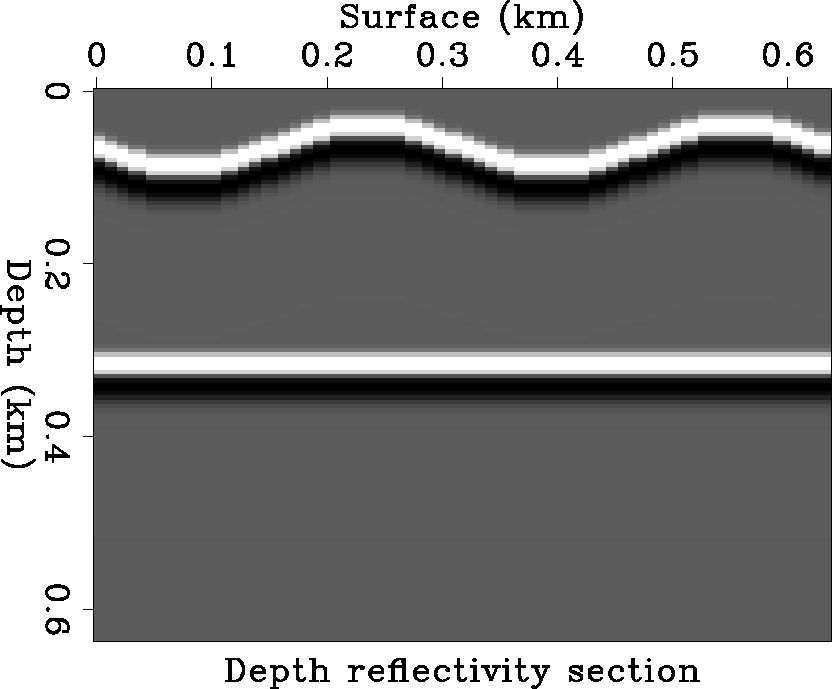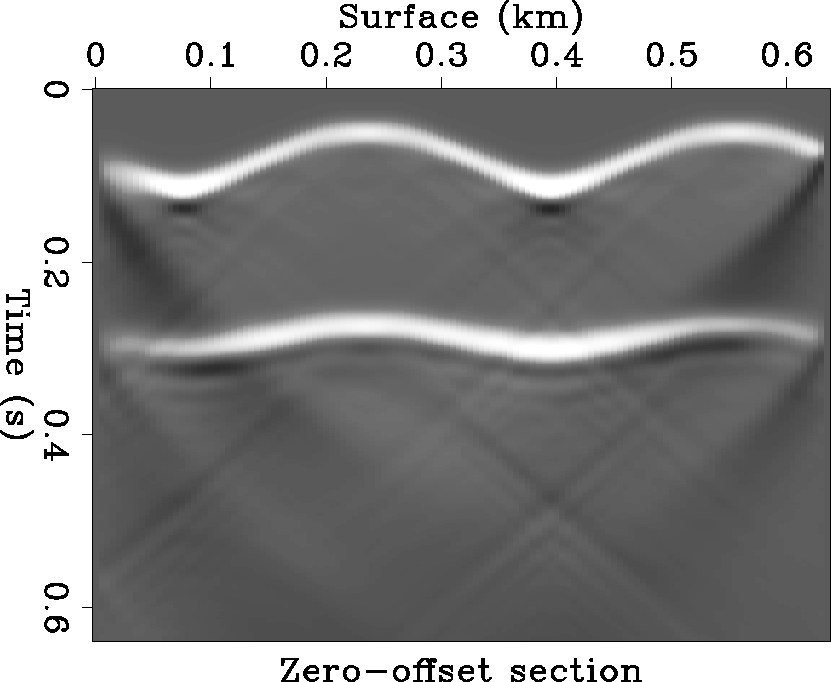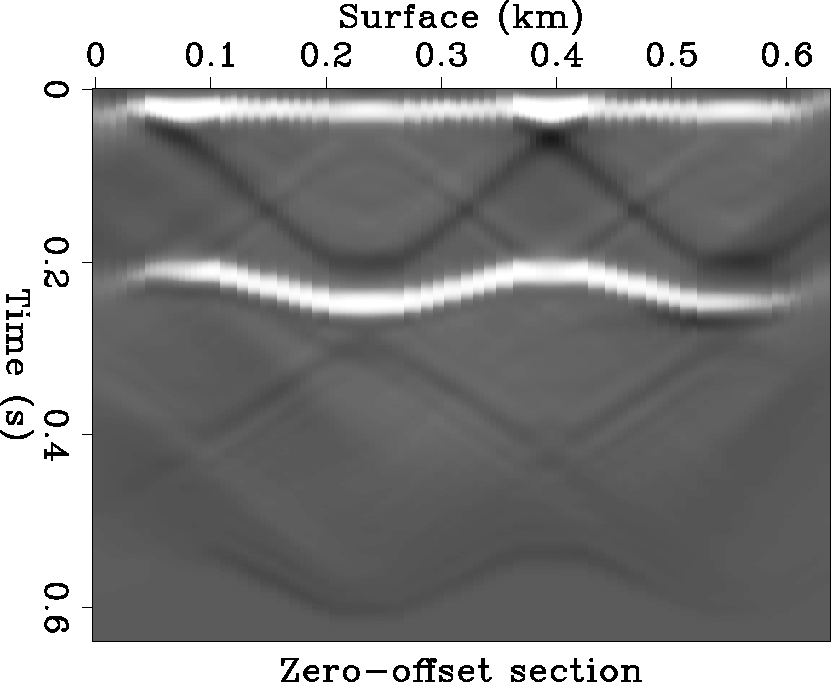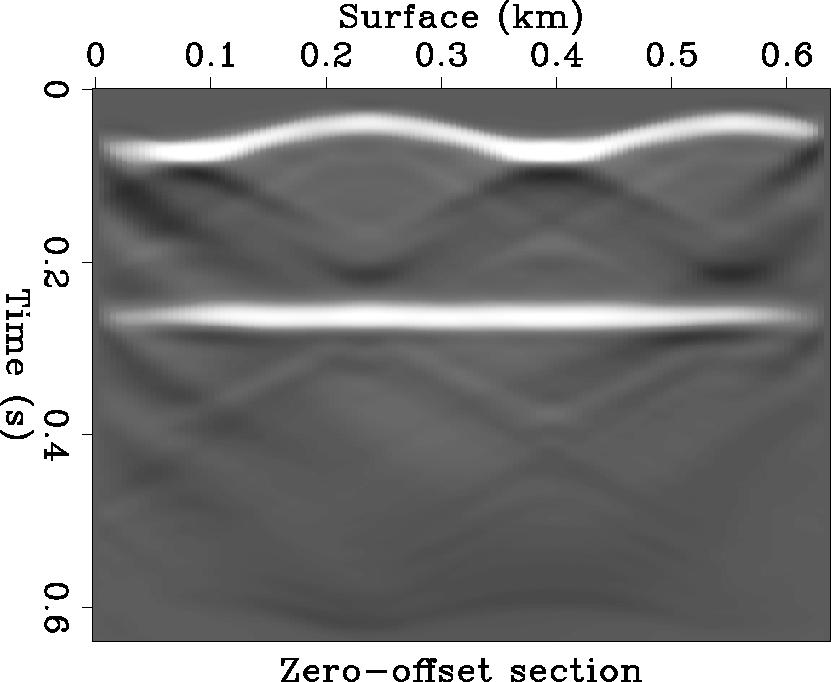|
depth.H
Figure 7 A marine model depth reflectivity section. |  |
|
depth.H
Figure 7 A marine model depth reflectivity section. |  |
|
depth.H0
Figure 8 The recorded zero-offset section at the sea surface. The subsurface planar reflector bears a distinct impression of the water bottom. |  |
|
depth.H01
Figure 9 The extrapolated zero-offset section at the surface of water bottom. The reflection of water bottom has been flattened. |  |
|
depth.H010
Figure 10 The new zero-offset section at the sea surface. The water layer velocity has been replaced by constant sediment velocity. |  |
|
depth.H010mig
Figure 11 The constant velocity reverse-time migration depth reflectivity section. |  |